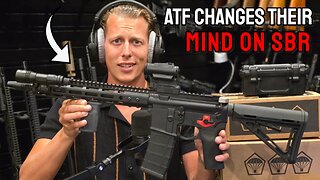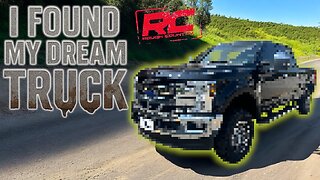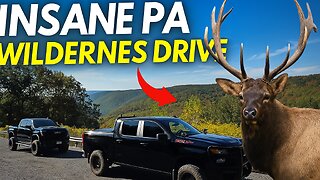Premium Only Content

Forklift Safety Training
You’re giving feedback on a new version of ChatGPT.
Which response do you prefer? Responses may take a moment to load.
ChatGPT
Response 1
Forklift safety training is essential to ensure workplace safety and compliance with regulations. Proper training reduces the risk of accidents, injuries, and equipment damage. Here's an outline of what forklift safety training typically includes:
1. Understanding Regulations
OSHA Compliance: Training programs must meet OSHA (or local authority) standards.
Employer Responsibilities: Employers must ensure operators are trained and certified.
2. Forklift Basics
Types of Forklifts: Counterbalance, reach trucks, pallet jacks, etc.
Forklift Components: Forks, mast, carriage, counterweight, controls, tires.
3. Safe Operation Practices
Pre-Operational Checks:
Inspect tires, brakes, lights, and fluid levels.
Check for leaks or damage.
Ensure forks are in good condition.
Starting Procedures: Use the correct startup sequence.
Driving Techniques:
Maintain a safe speed.
Keep forks low while traveling.
Observe clearances and avoid obstructions.
Use mirrors and spotters when necessary.
Lifting and Carrying Loads:
Position loads evenly.
Don’t exceed weight limits.
Ensure the load is stable before moving.
4. Hazard Awareness
Common Hazards: Uneven surfaces, narrow aisles, slippery floors, and blind spots.
Pedestrian Safety: Yield to pedestrians and maintain a safe distance.
Tipping Prevention:
Avoid sharp turns at speed.
Keep the load uphill on slopes.
5. Emergency Protocols
What to do in case of accidents or equipment failure.
Reporting unsafe conditions.
6. Hands-On Practice
Practical operation under supervision.
Navigating through obstacle courses.
Loading/unloading materials.
7. Certification and Evaluation
Written test to assess knowledge.
Practical test to evaluate skill proficiency.
Certification issued upon successful completion.
Would you like help in preparing training materials, presentations, or a checklist for forklift safety?
I prefer this response
ChatGPT
Response 2
Forklift safety training is essential to ensure the safety of operators, bystanders, and property in workplaces where forklifts are used. Proper training focuses on understanding the equipment, safe operation practices, and compliance with regulations, such as those set by OSHA (Occupational Safety and Health Administration) in the U.S. Here's a breakdown of what forklift safety training typically includes:
1. Introduction to Forklift Basics
Understanding the Equipment: Components, controls, and functions.
Types of Forklifts: Sit-down riders, stand-up reach trucks, pallet jacks, etc.
Stability Triangle: Key concept explaining balance and tipping prevention.
2. Regulations and Standards
OSHA standards (if applicable) for forklift operation.
Company policies and procedures.
3. Pre-Operation Inspection
Checking tires, brakes, steering, and warning devices.
Inspecting forks, hydraulic systems, and fuel/electrical connections.
Recording any maintenance issues.
4. Safe Operating Practices
Starting and Driving:
Wearing seat belts and safety gear.
Proper starting procedures.
Operating at safe speeds and in designated areas.
Loading and Unloading:
Weight limits and load capacity.
Proper positioning and securing of loads.
Avoiding overloading.
Maneuvering:
Navigating narrow aisles and tight spaces.
Safe turning and reversing techniques.
Keeping loads low when moving.
5. Hazard Awareness
Identifying workplace hazards, such as:
Uneven surfaces or ramps.
Pedestrian traffic.
Blind spots and obstructions.
How to handle spills, obstructions, or emergency situations.
6. Parking and Refueling/Charging
Safely parking on level ground.
Turning off and securing the forklift.
Refueling with propane/diesel or recharging batteries safely.
7. Practical Hands-On Training
Practicing operation in a supervised environment.
Demonstrating skills such as lifting, maneuvering, and parking.
Simulated hazard scenarios.
8. Evaluation and Certification
Written test to assess theoretical knowledge.
Practical evaluation of forklift operation skills.
Issuance of a certificate or operator license.
9. Refresher Training
When introducing new equipment.
After accidents or unsafe incidents.
Periodically, as required by workplace policies.
Would you like guidance on developing a detailed training program, or are you looking for resources to implement one?
I prefer this response
ChatGPT can make mistakes. Check important info.
-
 7:58
7:58
HSESafetyInformation
7 months agoAuthentic Peshawari Rosh _ Namkeen Gosht Recipe __ Traditional KPK and Baluchistan
701 -
 9:13:12
9:13:12
The Charlie Kirk Show
19 hours agoLIVE NOW: Building A Legacy, Remembering Charlie Kirk
2.15M926 -
 1:55:20
1:55:20
The White House
11 hours agoPresident Trump Participates in the Memorial Service for Charlie Kirk
99.2K90 -
 1:02:41
1:02:41
Sarah Westall
10 hours agoDomestic Terror Operation: Death Threats, Smear Campaigns, Gang Stalking w/ Journalist Sarah Fields
52.2K9 -
 1:51:40
1:51:40
Nerdrotic
10 hours ago $17.58 earnedGobekli Tepe Discovery and "Reconstruction" | Forbidden Frontier #118
84.3K10 -
 29:07
29:07
Tactical Advisor
10 hours agoATF Changes Ruling on SBR & Tacpack unboxing | Vault Room Live Stream 039
93.8K18 -
 2:00
2:00
From Zero → Viral with AI
16 hours ago $4.80 earnedAre You Being Left Behind? Why AI Marketing is No Longer Optional
50.7K8 -
 9:10
9:10
BlackDiamondGunsandGear
14 hours agoI Finally Got it! / Rough Country Build Ep.1
34.5K9 -
 9:44
9:44
Millionaire Mentor
3 days agoCharlie Kirk Brings Woke Student To STUTTERING Over White Privilege Lies
36.1K11 -
 24:12
24:12
MudandMunitions
15 hours agoOff-Roading with NYPrepper Wild Elk & PA’s Most Remote Backroads
22.8K1